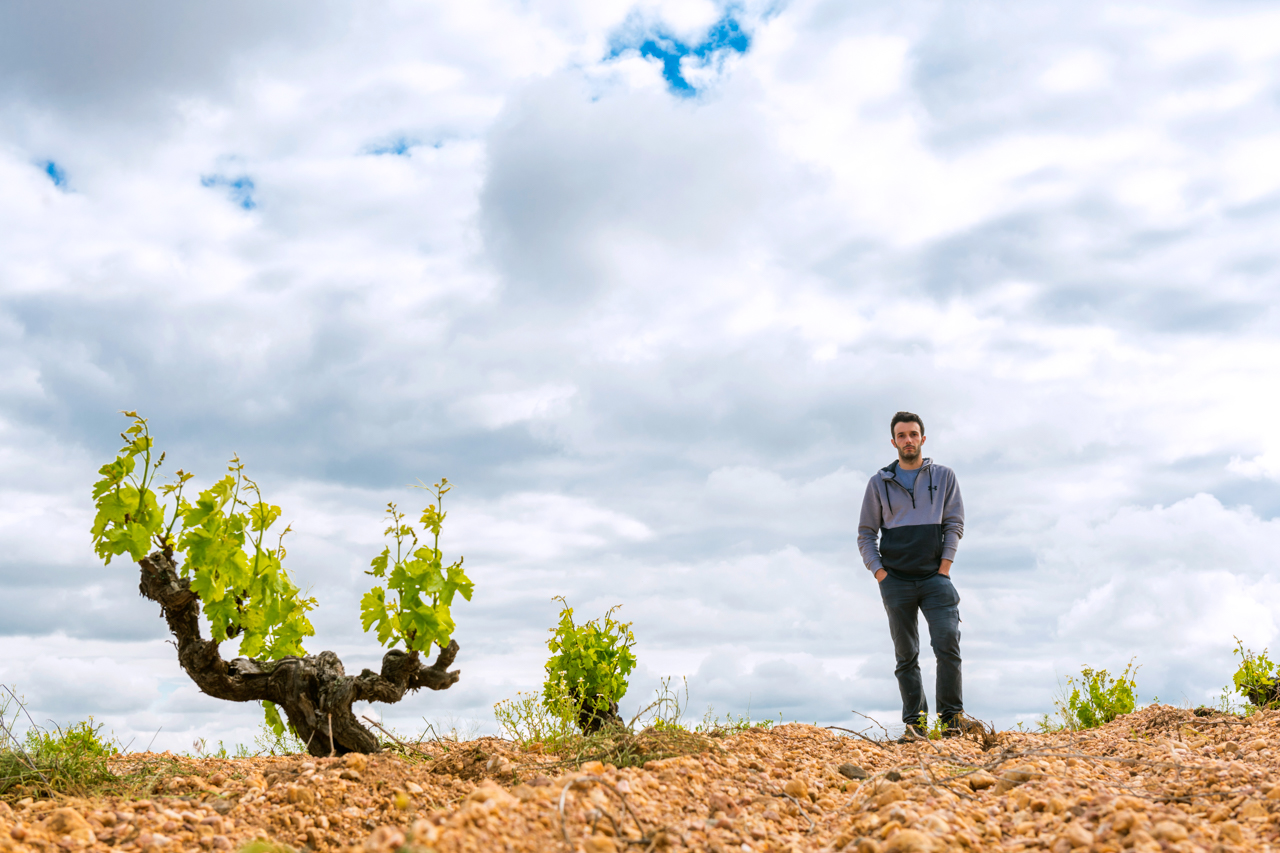

Toro is like the 1980s – big shoulder pads, teased hair, and flashy energy that seems to be chemically enhanced. […]
Keep ReadingToro is like the 1980s – big shoulder pads, teased hair, and flashy energy that seems to be chemically enhanced. It’s a DO that, in most regards, is caught in a time warp, much like that mauve and teal bathroom you’ve meant to remodel. But, having built its reputation on a style of wine that is now decidedly out of fashion, Toro is long overdue for a breath of fresh air – or fresh wine in the case of Alvar de Dios.
Alvar was born and raised in the village of El Pego near the southern boundary of DO Toro. His family had tended vineyards in the village for generations, but Alvar didn’t stay in Toro to learn his trade; instead, he fell in with a pair of vinous rebels working in the Sierra de Gredos – Fernando Garcia and Dani Landi. While working as the cellar master for Fernando at Bodega Marañones, he began acquiring vineyards of his own in and around his native DO, splitting his time between the Gredos and Toro.
Alvar’s first vineyard was inherited from his family in the village of El Pego in 2008. This site, called Aciano in honor of his grandfather, totals 3 ha of mainly Tempranillo at an elevation of 710m and is planted on a unique terroir for the DO – sand. This sandy soil is resistant to phylloxera, which is why these ungrafted vines, planted in 1919, have survived to this day. Since taking over this site, Alvar has farmed it organically, waiting until 2011 to make his first vintage.
In 2009 Alvar purchased Vagüera, a tiny half-hectare plot of abandoned vines at an elevation of 950m just south of the legal border of Toro near the village of El Maderal. This is a fascinating terroir – a shallow rocky red clay soil over limestone, north-facing, and sheltered by a cork oak forest. Untended since 2006, this site is a bewildering mix of white varieties. Alvar so far has identified Doña Blanca, Albillo Rojo, Albillo Real, Albillo Negro, Albillo Castellano, Moscatel de Grano Menudo, Muscat de Alexandria, Moscatel Rojo, Godello, Verdejo, Palomino Fino, and Malvasia. There are at least another five varieties that Alvar is yet to identify. Records indicate that this vineyard was planted in 1921.
Having left his native DO with the purchase of Vagüera, Alvar became interested in the nearby and newly created DO of Arribes and the surrounding area. Officially recognized in 2007, Arribes is where the Duero becomes the Douro as it carves a steep valley out of the granitic mountains forming the border between Spain and Portugal. Here he found not only soils reminiscent of the Gredos – granitic sand with a lot of mica – but a range of indigenous varieties capable of expressing elegance and freshness. Alvar has assembled 5 hectares from 36 separate vineyard parcels between the towns of Villadepera and Fermoselle. Camino de los Arrieros is his village wine made from 40-60-year-old vines of Juan Garcia, Rufete Trincadeira Preta, Bastardo, as well as some other unidentified varieties. Alvaro has also identified two additional, tiny, enclosed vineyards near Villadepera – Las Vidres planted with Doña Blanca and Yavallo planted with Merenzao (Trousseau), Rufete, Tincadeira Preta, Mencia, and Doña Blanca. Both vineyards are 80-90 years old and produce wines that Alvaro feels are the most unique and expressive. Las Vidres for its profoundly mineral core with evocative aromas of wild herbs and pollen, while Yavallo is fresh and floral with a depth of flavor and precision that seems like a cross between the Jura and a top Douro red.
In addition to his single-vineyard wines, Alvar makes a wine from three plots of vines located in the northwestern part of Toro. Ranging in age from 25–40 years old, these Tempranillo vines are grown on various soils. Named Tio Uco, this wine, like those from his single vineyards, is made from organically farmed grapes, is fermented whole cluster with indigenous yeasts, sees only a gentle maceration, and is aged primarily in neutral French oak barrels ranging in size from 300-1000L.
CloseAlvar de Dios in Vagüera
Natural fertilizers provided you can keep them from eating the vines
An old vine in Vagüera - a tiny vineyard of white varieties located just outside the boundaries of DO Toro
El Pego - old vines and sandy soils in Toro
The red clay of La Mata in Toro
La Mata – red clay soils in Toro before and after plowing
La Mata – surrounded by brush and wild flowers showing the natural setting for this vineyard
A river runs through it – Arribes, or where the Duero becomes the Douro.
Viña de Jordi in Arribes
Viña de Jordi - an enclosed vineyard with an ancient wall
Yavallo - a tiny enclosed vineyard just outside the boundaries of DO Arribes
The view from Las Vidres - located just outside the DO of Arribes
Alvar de Dios












